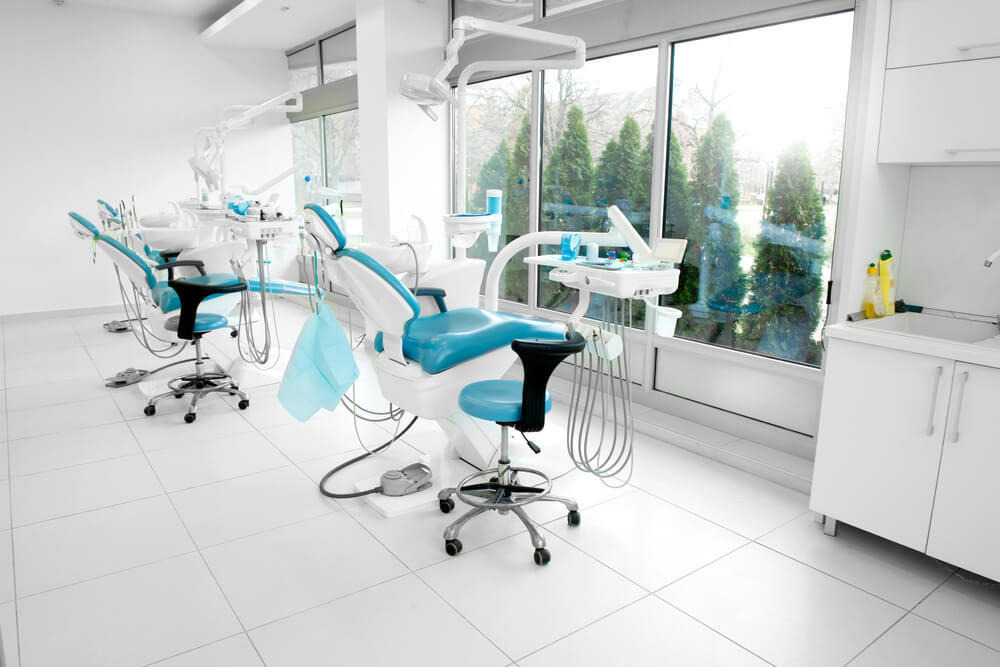Dry Suction vs Wet Suction in Dental Use: Which Do Dentists Prefer?
Your dental vacuum system is a critical component of your dental practice, supporting the equipment that helps remove saliva, debris, and bacteria from the patient’s oral cavity while you work. That translates to a safer experience for you and your staff and a more comfortable one for your patients. Whether you’re outfitting your practice for the first time or replacing older, outdated, or broken equipment, before investing in a dental vacuum, you’ll want to familiarise yourself with the different options on the market and evaluate how each might best fit your needs. Which vacuum source do you feel is better for your practice? This is a comparison between dry suction vs wet suction: dental edition.
Yes, we know there are generally two types of dental suction systems: wet and dry. But when should you install a wet system, and when a dry one? Dry suction vs wet suction in the dental setting is commonly used to clean teeth and provide a more comfortable patient experience. But what’s the difference between these two dental vacuum systems? We explore this question in detail below.
Dry Suction Pros and Cons
Dry suction uses an air-driven turbine or electric motor to generate suction pressure. This type of sucking is usually most effective for small particles or liquids, such as saliva.
 The new “dry” vacuums are “oil-free”. Many of the currently available dry vacs utilise oil in their motors for lubrication and cooling, much like a car. Therefore, the “oil” dry vacs exhaust oil vapours that pollute their immediate environment. They also require regular oil maintenance.
The new “dry” vacuums are “oil-free”. Many of the currently available dry vacs utilise oil in their motors for lubrication and cooling, much like a car. Therefore, the “oil” dry vacs exhaust oil vapours that pollute their immediate environment. They also require regular oil maintenance.
The newer dental dry vacs can create powerful vacuums without using oil. Carbon fibre vanes eliminate the need for oil in the process. There are no oil levels to check, no oil to add, no oil to change, and most importantly, no oil in the exhaust that can harm people and animals and cause severe damage to a roof or building exterior. Benefits and downsides of this kind of suction include:
Size & Volume: Traditional dry vacuums have been known to be bulky and noisy, but recent models are significantly smaller with barely audible sound levels. In fact, modern versions of these machines can operate at the same decibel level as a handheld device!
Power: To efficiently clean the space of your choice, it is paramount to consider each vacuum’s strength and suction ability. The power required for a successful job varies from one user to another; therefore, wet or dry vacuums come in different sizes with various levels of pressure or “inches of mercury” (Hg). Before making a purchase decision, think carefully about how much power you need and chat with your dealer about which machine will best serve you.
Longevity: With appropriate upkeep, dry vacs can last for up to 25 years – a testament to their reliability and sturdiness.
Maintenance: Both types require daily flushing of lines and the gravity release of the solids from the collecting tank. Also, maintenance is minimal – an annual oil and filter change will keep a dry dental vacuum running efficiently for decades.
Cost: The up-front cost of a new dry vac will come with a higher price tag than a wet vac. But the investment breaks even within a few years due to the absence of ongoing aggregate costs from water and electricity use associated with wet vacuums.
Wet Suction Pros and Cons
 Wet suction involves a tube attached to the wall, which wirelessly sucks liquid from the mouth. This technique is considered safer for soft tissue because it prevents blowing objects away from the mouth and into other body areas. It is also more efficient at removing liquid buildup thanks to its larger diameter hose and increased power supply.
Wet suction involves a tube attached to the wall, which wirelessly sucks liquid from the mouth. This technique is considered safer for soft tissue because it prevents blowing objects away from the mouth and into other body areas. It is also more efficient at removing liquid buildup thanks to its larger diameter hose and increased power supply.
As with anything, defining something as advantageous or not often on a wet suction system depends on the circumstances it’s being applied to, combined with the user’s priorities.
Size: Wet vacuums traditionally have been more compact, requiring a smaller footprint, which can be important in offices without a lot of extra inches, or that lack a room that can be dedicated wholly to utility equipment.
Power: The amount of power of the vacuum pump you need is specific to your practice. Both wet and dry vacuums have a range of sizes and powers of suction. Power is measured in inches of mercury (Hg). You will want to determine how much power you need and work with your dealer to determine which machine makes the most sense for you.
Noise: Wet vacs, until recently, had been quieter, which of course, translates to a quieter office and more flexibility in where you can place the machine. But recent changes in dry vac technology have reduced the difference; for some lines, dry vacs are quieter.
Longevity: The wet vacuum system has a lifespan range of 5-12 years, depending on the water quality and hours run.
 Maintenance: Both wet and dry systems require daily flushing of the suction lines to remove blood and debris, and an approved disinfectant should be run through the tubing. However, additional trap cleaning is required with wet vacs (a traditionally unpopular job). Because water contains minerals and pollutants that accumulate, the pump components wear more quickly, and the harsh cleaning solutions that run through the machine daily also take a toll.
Maintenance: Both wet and dry systems require daily flushing of the suction lines to remove blood and debris, and an approved disinfectant should be run through the tubing. However, additional trap cleaning is required with wet vacs (a traditionally unpopular job). Because water contains minerals and pollutants that accumulate, the pump components wear more quickly, and the harsh cleaning solutions that run through the machine daily also take a toll.
Cost: The initial investment for a wet vac is consistently lower than for a dry suction system. However, once the ongoing costs of water, electricity, maintenance, additional components, and the shorter lifespan are considered, the dry vac is almost always the more economical choice over time.
The purchase of the right dental vacuum for your practice can be made with confidence, with the right assessment of your needs, and, like all big investments, careful weighing of the pros and cons of each model.
References:
https://www.dentalez.com/the-guide-to-dental-vacuum-pumps-wet-vs-dry/
https://www.oralhealthgroup.com/features/a-buyers-guide-to-dental-vacuum-systems/



